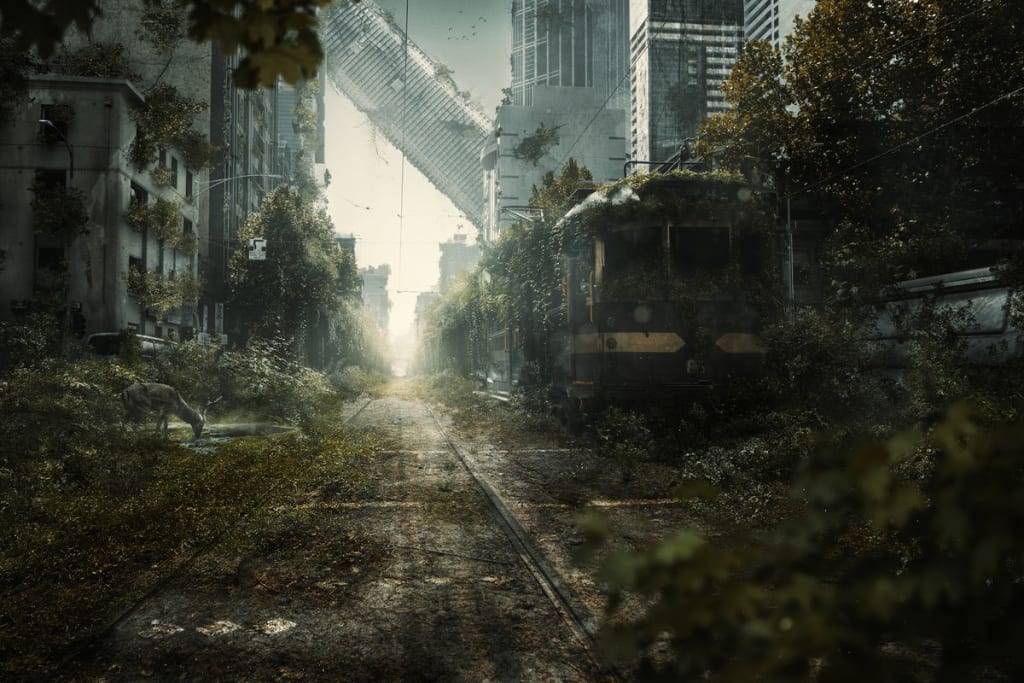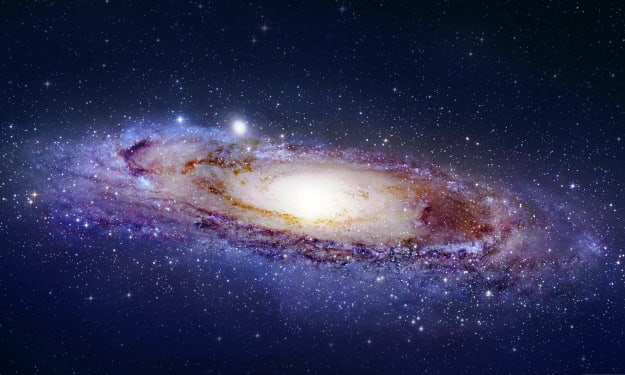Would Humanity Endure a Dinosaur-Extinction Event Today?
Could Our Civilization Withstand a Dino-Sized Disaster?

66 million years ago, something really bad happened to life on Earth. It was the worst day ever.
A killer asteroid came from the south, moving at an incredibly fast speed. When it hit Earth, it had more power than 10 billion atomic bombs. For over 20 minutes, the planet experienced extreme heat and molten debris rained down, causing global wildfires. The impact also led to earthquakes and volcanic eruptions. The final blow came as dust clouds blocked out the sun for up to 15 years. 75% of all species went extinct, but some managed to survive.
Crocodiles are amazing creatures that can go for months without food. During tough times, they retreat to the water and feed off dead matter that washes down the river, staying mostly unscathed.
Unfortunately, birds with teeth went extinct, but luckily those with beaks adapted and used them as multi tools to access hardy food sources like seeds.
Our tiny shrew-like mammal ancestors were clever survivors. They did what they did best, hiding out in the safety of the shadows to ensure their survival.
Have you ever wondered how we would fare in an apocalypse like the dinosaurs faced? What if the same asteroid struck again in the same place, at the same angle? Would humans be able to survive or would we meet the same fate as the dinosaurs? It's an interesting thought to ponder.
Central America and the southern United States would be vaporized in a flash by the blast. Within seconds, a hundred million people would perish. The sound of the impact alone would be enough to kill anyone standing 1500 kilometers away.
In just minutes, massive earthquakes, between magnitude 9 to 11, would shake the Earth, stronger than any before. Huge tsunamis, reaching 100 meters tall, would sweep the coasts and flood up to a hundred kilometers inland. This could lead to the drowning of over 3 billion people.
If a massive asteroid were to hit the Earth, the debris would mostly fall on the United States, putting many more people at risk. For those far enough away, the earthquake would send a clear message to seek shelter underground before the molten rains came. Luckily, there are millions of fallout shelters worldwide, including hundreds of thousands in Switzerland alone. Underground cities like Derinkuyu in Turkey and Nushabad in Iran could also provide safe havens for millions of people.
Billions of people could potentially survive the blast by seeking shelter in places like mines and subways. However, these shelters may not be equipped to sustain people for long periods of time. Few of them are designed to be self-sufficient for months or years, even if survivors are not affected by earthquakes.
After the impact, fiery debris and acid rain would fall from the sky for years. This would make any open air activity possibly deadly for long periods of time. Only a small number of high-tech doomsday bunkers, built by world governments and the ultra-rich, would offer long-term protection.
The Raven Rock Mountain Complex in Pennsylvania is maintained by the US government. It has three-story buildings and water reservoirs, with space for thousands of people. However, the exact contents are unknown to the public.
Other major nations are believed to have similar contingency bunkers. This suggests that major world governments may continue to exist, at least in the short term. The ultra-rich have been obtaining citizenship in New Zealand, which is ideal for self-sufficiency. Luxury bunkers have been built in the country, some stocked with years of provisions.
The biggest challenge to survival would be the long game.
The dust cloud would cover the world, causing crop failures. Without enough food, people would suffer, and water sources would become poisoned by the rain. Famine could lead to billions of deaths, making it the biggest threat.
In this challenging post-impact environment, there are opportunities to adapt. Some survivors may thrive by harvesting fungi that can grow without sunlight, flourishing in the aftermath of devastating fires. The climate would gradually shift from cold to hot, with trapped carbon dioxide intensifying heat. With creativity and determination, small groups could endure by rationing, scavenging, and trying makeshift farming methods.
Imagine a world where human existence is drastically changed. It would be a shadow of what it once was. Without any warning, our hopes would be grim. But what if we knew it was coming? How would we prepare for the unimaginable?
In September 2022, NASA's DART satellite successfully hit a small asteroid 11 million kilometers away. The impact slowed the asteroid's orbit by 32 minutes. Both the Hubble and James Webb space telescopes captured images of the debris plume. This shows that we now have the technology to protect our planet from potential disasters.
Not all space rocks are the same. The asteroid NASA hit was small compared to the one that killed the dinosaurs. That asteroid was over 10 kilometers across, larger than Mount Everest. Dealing with a big asteroid like that is a bigger challenge. If we try to break it up, we risk creating more dangerous pieces. High explosives could be used to push the asteroid into a new orbit. But a more precise approach might be safer in the long run.
Some people have suggested using lasers to move an object out of harm's way. Others have proposed attaching big solar sails to redirect the asteroid into a new orbit.
Good news! Astronomers have mapped all asteroids larger than one kilometer in our solar system, and none of them are headed towards Earth in the near future. If anything were to come from the asteroid belt, we would have plenty of time to prepare. However, there is a concern about large asteroids coming from outside the solar system, as we do not have a catalog for those. They could arrive suddenly and at high speeds, giving us very little warning to prepare a defense
No matter how much time we have to prepare a deflection mission, having a backup plan is essential.
Let's start by evacuating the Yucatan Peninsula and surrounding areas to save millions of lives from the blast. Next, we can build self-sustaining armored habitats that can withstand meteorite impacts and earthquakes. We can repurpose mine shafts and deep caves to create underground cities powered by nuclear reactors, supporting vertical farms to sustain life.
Iceland has abundant geothermal heat, a renewable energy source not dependent on the sun, which can provide power even when sunlight is not available. Around the world, there are over 20,000 kilometers of subway tunnels that could be converted into tunnel cities capable of housing over a billion people.
Preserving a trove of seeds, livestock, data, and natural resources is crucial. Fortified vaults placed worldwide patiently guard their treasures, awaiting the return of their creators. The most vital resource to save is water. Deep water silos could be dug to house vast reservoirs lined with acid-resistant materials, then sealed to protect from the elements.
If resources are limited, consider a unique form of agriculture: algae farming. Though it may not sound appealing, algae could be a great emergency food source. It's efficient, can grow in low light, and can be farmed vertically on minimal land.
After years of preparation, there would be one last hopeful solution to consider: leaving Earth behind.
In a small colony on the moon, a select group of individuals observed a disaster unfolding from a safe distance. They were unsure if they would ever be able to return home.
In 2018, a former NASA engineer noticed too much information and distorted facts in the media. So, she created Ground News. It collects articles from around the world so you can compare different perspectives. The Blind Spot Feed highlights stories that one side of the political spectrum covers more, helping you see a broader view of the world. It gives you the power to think critically about news and take control of how you consume information. It's all about understanding different perspectives and making informed choices about the news.
About the Creator
Enjoyed the story? Support the Creator.
Subscribe for free to receive all their stories in your feed. You could also pledge your support or give them a one-off tip, letting them know you appreciate their work.






Comments
There are no comments for this story
Be the first to respond and start the conversation.